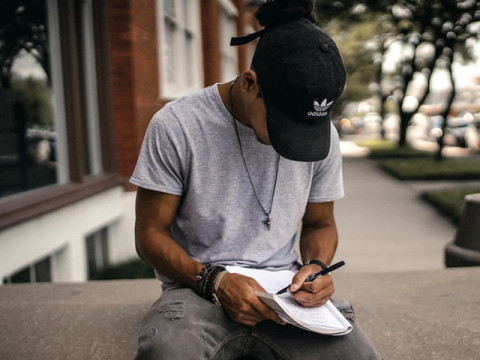
10 min
0
10.04.2022

For a job seeker, a cover letter is a vital piece of document. It can make or break an applicant's chances of being hired. Many people find it a challenging task, but in reality, it is not that demanding. All you need is to know what to write and how to write it.
You do not need to worry about it as these tips have been searched for from far and wide and even consulted human resource recruiters a cover letter. The first helpful tip before beginning to writing is to research and study some effective cover letter examples.
What Is a Cover Letter?
The first step is to understand what even is a cover letter. A cover letter is a part of a job application letter. It precedes the resume or CV. A resume uses bullet points to convey work experience, whereas the cover letter relays your personality to the recruiters.
You can use this opportunity to lay a strong foundation for your resume. It is your first official introduction to the hiring manager. It needs to be professional and concise. Furthermore, if you apply for different job postings, you may need to alter your cover letter and resume to suit each job's requirements. The letter creates a link between your knowledge and skills with how you practically applied them.
Why Do We Write It?
A cover letter is an opportunity as it provides the applicants with an extra step to reach out to and shows several factors for the hiring manager. Some of these factors are:
- The applicants can emphasize their skills and strengths for value creation for the company.
- They can show the recruiters how you are unique and different from all the other applicants.
- It helps create a relationship with your potential employers.
- You can convey your personality and story through the cover letter.
Steps to Writing a Cover Letter
These steps have been created to act as a cover letter template and help with an applicant's search for their dream job.
The First Part of the Cover Letter
The first part of a cover letter is the basic introduction. An applicant will typically use this portion to provide their information to the hiring committee. The information will be very brief and will be regarding how to contact the information. An applicant does not need to mention their skills or experiences in this part. This portion also greets the hiring committee. It consists of two segments. These segments are:
- The header;
- The salutation.
Create the Header
A cover letter begins with the header. It provides the necessary information of the applicant as well the company's information. The header should not be very detailed or lengthy. Try to keep it concise and to the point while avoiding any unnecessary details.
The header should start with the name of the applicant and their position. The position will be the applicant's current working status, or you may use the title of the job as mentioned in the job description. After the name, you can provide your contact information on the left-hand side of the page. On the right-hand side, the name of the company and its address are written. The contact information should include the following elements:
- Applicant's full name;
- Contact number/s (mobile or phone number);
- Email address;
- Address;
- LinkedIn profile (optional);
- Social media handles (optional).
The email address should be professional. The format of a professional email address is (first name) (last name) @xyz.com. You can also use a variation of this by changing the sequence or adding any number or symbol.
Moreover, the majority of companies have a LinkedIn profile. It will be beneficial for the applicant if they mention their profiles as well. In normal circumstances, you should avoid providing any social media handles in a professional cover letter. Although, if the social media account adds to your portfolio, then you may add it.
Use a Personalized Salutation
After the header, you start writing the main content of the letter. It begins with a salutation, as do most applications and letters. An applicant can use a typical greeting such as:
- Dear sir or madam;
- To whom it may concern;
- Dear Manager.
There is not anything wrong with these greetings, but they are monotonous. The hiring committee goes through hundreds of resumes daily. They are used to these greetings. So, before you begin writing, you should find out who will be reading the resume. It will help if you customize the salutation, which will immediately catch the reader's attention and make your cover letter stand out. You can find the hiring manager's name on the job advert and the company's website or LinkedIn. If the information is not available on these platforms, you can call the company and ask them.
The Body
Once the applicant is done writing the header and greetings, they can move onto the second part. This part is the body of your cover letter and has the majority of the content. It is composed of three paragraphs. An applicant will use these paragraphs to convince the recruiters why they are the best fit for the open position.
The First Paragraph
In the first paragraph, you have to capture the attention of the hiring committee. The opening line should be captivating. It would help if you focused more on the company and position you are applying for rather than yourself. It is a popular sales rule that everyone wants to talk to or read about themselves. You can apply it in your application as well. As an applicant, you should convey why this company and opportunity are something you want.
You can use a professional reference or achievement in this paragraph as well. Although, an applicant should not go off on a tangent of all their achievements. Instead, the applicant should write about a single achievement that relates to the job you are applying for.
The Second Paragraph
In the second paragraph, an applicant conveys to the hiring committee why they are the right person for the job opening. It is your chance to layout your best assets. The aim is not to simply list your assets and skills, which does not positively impact the reader. The applicant has to elaborate on those skills which relate to the job.
The applicants need to show that they have what the company needs. A simple tip to do this is to read the job description carefully. When the company posts about specific jobs and their descriptions, they also list all the responsibilities. It would help if you did not write that you have done a job with similar responsibilities but instead write about its impact.
All you need to do is to select a few important ones. After that, you will relate any personal achievements or skills to these responsibilities. You can use bullet points to highlight these factors to have a powerful impact on the readers. You can mention any projects you have been a part of that relate to the job itself.
Do not shy away from using figures. Using numbers creates a better understanding of your achievement. The following example will help in better understanding this concept. You can write:
- I use online platforms to increase ABC company's customers.
- I utilized online marketing techniques and tools to increase ABC company's customer base by 27%.
Both these statements imply the same message, but they both have different effects. The first statement will be easily overlooked, and the reader will not even remember it. The second statement changes the tone altogether, and a reader is more likely to remember the statement if you use a scale in it.
The Third Paragraph
The third paragraph is the last part of the body. At this point, the applicant has already captured the hiring committee's attention and elaborated on why the applicant is the perfect fit. In this paragraph, the applicant will reiterate how the company is also a good fit for them.
The applicant will focus on why they want this particular job at this company instead of any other job. You have to show how you can create value for the company as well. You can focus on a particular aspect of the company and how your acquired skills will be used.
You can highlight a particular project of the company that your experiences can help improve. The paragraph does not need to be very long, with a detailed description of the project and an in-depth analysis. Keep it brief and to the point; a complicated paragraph will only dissuade the reader. For example, if you are applying for a position as a marketing manager, you may write;
"I know that 123 company is expanding their marketing plan and techniques to incorporate social media platforms. The expansion of marketing platforms is a perfect fit for my professional skills. I would be keen to impart my experience and knowledge to help launch such an endeavor."
Closing the Cover Letter
The body of the cover letter consists of the majority of the content. After the applicant has written the third paragraph, they will focus on ending the application letter. The end is as important as the beginning. It is the last chance an applicant has to show their personality and appeal to the hiring committee. The resume focuses more on facts and figures and does not show any personality.
An applicant needs to be very strategic when writing the last part of the cover letter and try not to slack off as it hinders their chances of getting selected. The last part of the closing letter encompasses three elements. These elements are:
- The closing paragraph;
- The formal closing;
- The postscript.
The Closing Paragraph
The final paragraph in your cover letter is the closing paragraph. The applicant may once again emphasize how enthusiastic they are about such an opportunity. You may mention how you are looking forward to an interview and discussing the prospects of creating value for the company.
In this paragraph, an applicant may be polite and thank the hiring committee for their time and attention. It does not need to be a long sentence but briefly mention it. For example, the applicant may write, "Thank you for taking time out of your day to review my resume."
Formal Closing
The next step is to use a formal closing. An applicant has a variety of options to choose from; the most traditional options are:
- Yours truly;
- Sincerely yours;
- Respectfully yours;
- Thank you;
- Sincerely.
You can also opt for more contemporary options such as:
- Kind regards;
- With best regards;
- Thank you for your consideration.
Under the salutation, the applicant may write their full name. It is not compulsory, but an applicant may mention any contact information such as their email address. The applicant can also add their digital signature. It creates an overall professional outlook of the cover letter.
Adding a Postscript
The postscript draws the hiring manager's attention to it. It provides you with a fantastic opportunity to write something impactful. The detail should be relevant. The applicant may write about a significant career achievement or any detail that may be beneficial.
The Format and Final Edit of the Cover Letter
The last step for writing any document is to format it and proofread it. When formatting a cover letter, an applicant needs to keep the following points in mind:
- They should stick to the 3-body paragraph limit and avoid writing a length two-page cover letter.
- The entire letter and resume must be written in one font. It should be an easy-to-read and professional font like Calibri, Arial, or Times New Roman.
- The margins should be one full inch on the top, bottom, right, and left.
- The line spacing should be uniform throughout the document and has to be 1.
An applicant can study a sample cover letter to help in formatting. After they have compiled it, an applicant may read the cover letter. It will help find any typos or grammatical errors. An applicant can ask a friend to read the letter and give them feedback as well.



